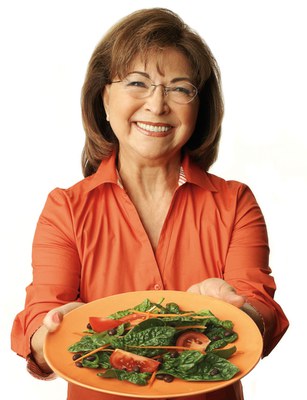Eating for Your Eye Health (FN709, Reviewed Aug. 2019)
Availability: Web only
Macular Degeneration
Age-related macular degeneration is the deterioration of the central region of the retina called the macula. The macula is made up of lutein and zeaxanthin – two carotenoids in the same group as the familiar beta-carotene found in carrots and used by the body to make vitamin A.
However, no beta-carotene is found in the macula. Only lutein and zeaxanthin are found there. A “healthy” macula, about the size of this letter “O,” is necessary for central vision. In age-related macular degeneration (AMD), central vision becomes blurry.
Nearly 2 million Americans have vision loss from advanced AMD, and another 7 million with early AMD are at substantial risk for vision loss.
AMD comes in two types: wet and dry.
- Dry AMD, more common and less severe, occurs when light-sensitive cells in the macula slowly break down. Untreated dry AMD can progress (sometimes very quickly) to wet AMD.
- Wet AMD is caused by abnormal growth of blood vessels under the macula. This leads to rapid loss of central vision. Wet AMD is otherwise known as advanced AMD.
Risk Factors
Treatments are limited and usually ineffective, so getting an early diagnosis is important. Know what the risk factors are, especially those factors that may be affected by your lifestyle choices. Risk factors include:
- Age — AMD increases with age
- AMD — Disease in one eye is an indication of later disease in the other eye
- Smoking — AMD occurs two to three times more frequently among tobacco smokers
- Sunlight — Overexposure to sunlight early in life
- Skin color — Light-skinned
- Eye color — Blue-eyed
- Gender — Female
- Genetics — First-degree relatives with AMD
- Exercise — Those physically active are less likely to get wet AMD, but no association has been found for dry AMD.
Nutrition for Your Eyes
We cannot change our genetic inheritance, but we can exercise and eat a diet rich in fruits and vegetables.
Several studies in the last 10 years have suggested that certain vitamins and other nutrients may reduce vision loss.
Diets rich in carotenoids, such as lutein and zeaxanthin, may help prevent or delay AMD progression.
At least two dozen observational studies, although small, show some protection offered by lutein and zeaxanthin found in fruits, vegetables and eggs.
Lutein and zeaxanthin are not made by the body. Protective antioxidant-rich nutrition, including lutein and zeaxanthin, is a low-cost way to help prevent AMD and it helps promote overall health.
Omega-3 fats, found in walnuts, certain fish and flax, also may be important for eye health. National Eye Institute studies are planned to determine if lutein, zeaxanthin and Omega-3 fatty acids will decrease a person’s risk of progression to advanced AMD, which often leads to vision loss.
What to Eat for Eye Health
- Follow Popeye’s philosophy: Eat dark, leafy greens, such as spinach, Swiss chard and kale. They are the best sources of lutein.
- If you don’t like spinach, try these good sources of lutein: corn, egg yolk, romaine lettuce, zucchini, broccoli, brussels sprouts, peas, yellow/orange vegetables (not carrots – they have beta-carotene and are good for night vision) and kiwi.
- Enjoy these foods high in zeaxanthin: corn, orange bell peppers, kale, collard greens, Swiss chard, spinach, oranges and mango.
- Try cooking vegetables to increase the absorption of lutein and zeaxanthin. Raw fruits and vegetables provide lutein and zeaxanthin, too.
- Have more fruits and vegetables of all types for good health.
- Choose healthy fats with each meal. Fat allows better absorption of the carotenoids lutein and zeaxanthin. Choose “oil and vinegar” type salad dressing using olive or canola oil instead of the fat-free types.
- Enjoy eggs for breakfast, the most important meal of the day. Eggs may be the most absorbable source of lutein and zeaxanthin.
See NDSU publication FN710, “Look After Your Eyes,” for other important information about eye health.
For more information on AMD
https://nei.nih.gov/health/maculardegen/armd_facts
For more information on this and other topics, see www.ag.ndsu.edu/food


